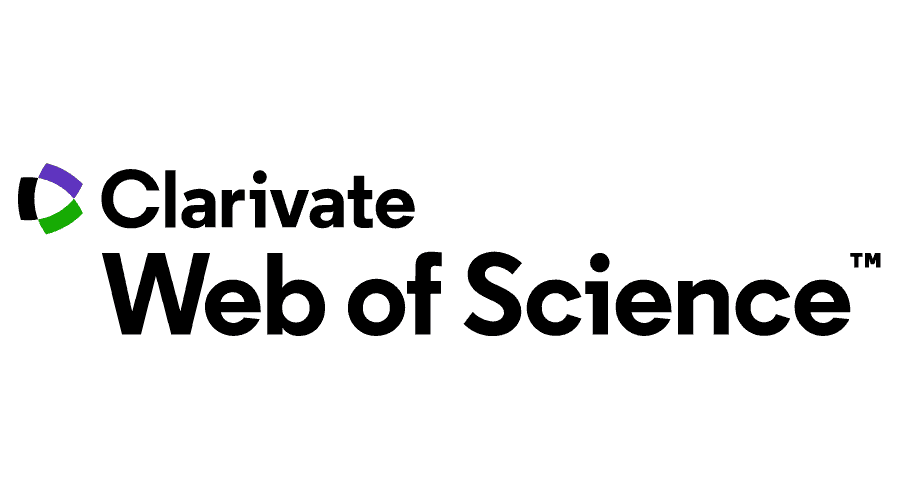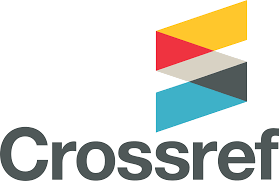Author Guidelines
Author Charge:
Submission and processing to the SEAM are free of charge. However, for articles that have been accepted for publication, authors are responsible for seeking professional proofreading before proceeding to the layout process.
Download Files
Submission of Manuscript
Manuscripts for submission should be complete in all respects, original in content, and have not previously been published or considered for publication elsewhere. All manuscripts must be written in English, complete with tables and/or figures, and should be submitted to the SEAM manuscript submission website. The preferred format is an MS Word (Windows) document. If accepted, the manuscript must not be published elsewhere in the same form, either in English or another language, without the consent of the Editor and Publisher. Upon acceptance of an article, authors will be asked to complete a Journal Publishing Agreement (JPA). For writing, details can be seen directly on the template.
Style of Manuscript
Manuscripts must be on A4 paper, with margins of 2.5cm on all four sides, the font should be 12 point Times New Roman and 1.5 spaced. The manuscript should not exceed 25 pages in total. Manuscripts should be ordered as follows:
- Page 1 must contain a complete and succinct title; first name, middle initial, and surname of each author; affiliations, mailing address, phone number, fax number, and email addresses of all authors for editorial correspondence regarding the manuscript.
- Page 2 should contain the ‘Abstract' of approximately 250 words. The abstract should be structured and include the objective, methods, results, and conclusions. The abstract should be followed by 5 to 7 keywords.
- Page 3 onwards should include the following sections: Introduction, Literature Review, Research Methods, Results and Discussion, Managerial Implications in The South East Asian Context, Theoretical Implications, Conclusion and Acknowledgments (if any), Conflict of Interest Statement, References, Tables, and Figures. All statistical methods used for analysis should be described in detail in the Methods section of the manuscript. Avoid relying solely on statistical hypothesis testing, such as p-values, which may fail to convey important information about study outcomes. Define all statistical terms, abbreviations, and symbols and specify which computer software was used.
Figures and Tables
Each illustration should be numbered consecutively using Arabic numbers and accompanied by a legend describing it. All illustrations must be submitted in a format suitable for reproduction across either a single column or an entire page. Each table should be clearly titled and labelled with a comprehensive legend. Tables should be numbered separately to illustrations using Arabic numbers i.e. Table 1, 2, etc. Statistical measures of variation such as SD and SEM etc. should be identified. Tables and graphics should be provided separately from the main text. Captions for the graphic content should be written below each figure, and the title should be written above the table. Written permission must be obtained to reproduce any graphic content from another author and their publisher. Colour figures are accepted.
References
References should be listed consecutively in alphabetical order and kept to an appropriate minimum. References should include the beginning and end page numbers of the journal from which it is cited. References in the text, tables, and figures should be identified with Arabic numbers. Manuscripts written in languages other than English should be limited. List all authors’ names if there are six or fewer; when there are seven or more authors list the first six authors followed by et al. Websites are not to be cited in the reference list but may be cited within the text or in the table as a footnote. The authors are responsible for correctly citing the references used within their article. Pay attention that SEAM uses APA Citation Style. We recommend that you use a reference manager such as Mendeley or EndNote. Examples of acceptable references are given below:
Journal article
Ahuja, G. (2000). The duality of collaboration: Inducements and opportunities in the formation of interfirm linkages. Strategic Management Journal, 21(3), 317-343.
Felstead, A., Jewson, N., Phizacklea, A., & Walters, S. (2002). Opportunities to work at home in the context of work-life balance. Human Resource Management Journal, 12(1), 54-76.
Hair, J. F., Black, W. C., Babin, B. J., Anderson, R. E., & Tatham, R. L. (2006). Multivariate data analysis. Upper Saddle River, NJ: Pearson Education Inc
Use of Abbreviations and Acronyms
Acronyms and abbreviations are words that use either the first letter of multiple words or a shortened form of the original word. They are commonly used to help readers understand more complex terms in a scientific document and for ease of reading; a commonly used acronym is BOD for the Board of Directors. To help authors in the use of abbreviations and acronyms in their articles, the South East Asian Journal of Management adheres to the following guidelines:
- Do not use abbreviations or acronyms in the title of your article unless the subject is widely known and the abbreviation is commonly used.
- Always explain or spell out the acronym or abbreviation the first time it is used in the body of your paper.
- Standard abbreviations for units of measurement or chemical names that a widely accepted within the scientific community do not need to be spelled out at any point in the paper.
- Avoid using abbreviations or acronyms in the abstract of your paper unless you use it multiple times. If you do use an acronym in your abstract be sure you define it in the abstract and define it again the first time it is used within the body of the paper.
- Only define the abbreviation or acronym once within the body of the paper.
- Acronyms and abbreviations should be kept to a minimum in figures and image captions. It is best to spell out the names entirely for readers who may be scanning the document before deciding on reading the whole paper.
- The authors attest that the manuscript, or portions of the manuscript, has not been previously published and that they have not released publishing rights of the article to a third party.
- The manuscript should comply with the SEAM's main focus and scope.
- The authors have checked that their manuscript thoroughly complies with the guidelines set by the SEAM. As part of the submission process, authors are required to check off their submission's compliance with all of the following items, and submissions may be returned to authors that do not adhere to these guidelines.
- use for classroom teaching by the Author(s) or Author(s)' institution and presentation at a meeting or conference and distributing copies to attendees;
- use for internal training by the Author(s)' institution;
- distribution to colleagues for their research use;
- use in a subsequent compilation of the Author(s)' works;
- inclusion in a thesis or dissertation;
- reuse of portions or extracts from the article in other works (with full acknowledgement of the final article);
- preparation of derivative works (with full acknowledgement of the final article);
- voluntary posting on open web sites operated by the Author(s) or Author(s)' institution for scholarly purposes,
Acknowledgements
Personal acknowledgements should be limited to appropriate professionals who contributed to the paper, including technical help, financial or material support, and general support by a department chairperson.
Proofs
Proofs will be sent to the authors by e-mail. Only minor changes are allowed, and printer errors must be corrected; no changes or additions to the edited manuscript will be allowed at this stage. The corrected proofs must be returned within 2 (two) days of receipt, preferably by e-mail. If the editor receives no reply after 1 (one) week, they will assume there are no errors to correct, and the article will be published after in-house revision.
Author's Digital Identifier
From January 1, 2017, it's compulsory for all authors submitting papers to SEAM to provide (preferred sequence): Scopus Author ID (scopus.com) or ORCID iD (orcid.org) or LiveDNAiD (livedna.net) or Google Scholar Citation public profile or Researchgate profile (researchgate.net) before final publication of their articles. These digital identifiers shall provide profiles of the author's research activities and publications to distinguish themselves.
Submission Preparation Checklist
As part of the submission process, authors are required to check off their submission's compliance with all of the following items, and submissions may be returned to authors that do not adhere to these guidelines.
Copyright Notice
Author(s) Rights
In order for The South East Asian Journal of Management (SEAM) to publish and disseminate research articles, we need publishing rights (transferred from author(s) to the publisher). This is determined by a publishing agreement between the Author(s) and SEAM.
This agreement deals with the transfer or license of the copyright of publishing to SEAM, while Authors still retain significant rights to use and share their own published articles. SEAM supports the need for authors to share, disseminate and maximize the impact of their research and these rights, in any databases.
As the manuscript Author(s), you have rights for a large range of uses of your article, including use by your employing institution or company. These Author rights can be exercised without the need to obtain specific permission. Authors publishing in SEAM have wide rights to use their works for teaching and scholarly purposes without needing to seek permission, including:
(but it should follow the open access license of Creative Common CC-by-SA License).
Authors/Readers/Third Parties can copy and redistribute the material in any medium or format, as well as remix, transform, and build upon the material for any purpose, even commercially, but they must give appropriate credit (the name of the creator and attribution parties (author(s)' detailed information) provide a link to the license, and indicate if changes were made.
Authors/Readers/Third Parties can read, print and download, redistribute or republish the article (e.g. display in a repository), translate the article, download for text and data mining purposes, reuse portions or extracts from the article in other works, sell or re-use for commercial purposes, remix, transform, or build upon the material, they must distribute their contributions under the same license as the original Creative Commons Attribution-ShareAlike (CC BY-SA).
Copyright Transfer Agreement for Publishing Rights
The Authors submitting a manuscript do so on the understanding that if accepted for publication, copyright for publishing (publishing rights) of the article shall be assigned/transferred to SEAM as the Publisher.
Upon acceptance of an article, authors will be asked to complete a Journal Publishing Agreement in the form of a copyright transfer agreement for publishing. An e-mail will be sent to the Corresponding Author confirming receipt of the manuscript together with a Journal Publishing Agreement to be signed by all authors (if possible) or the corresponding author (on behalf of all authors).
The South East Asian Journal of Management, the Editors and the International Advisory Board make every effort to ensure that no wrong or misleading data, opinions or statements are published in the journal. However, the contents of the articles published in SEAM are the sole and exclusive responsibility of their respective authors.












